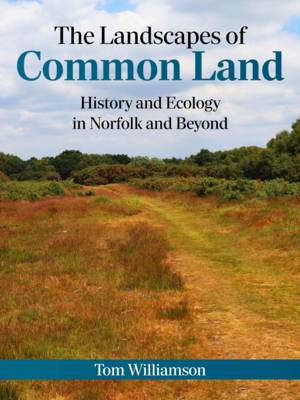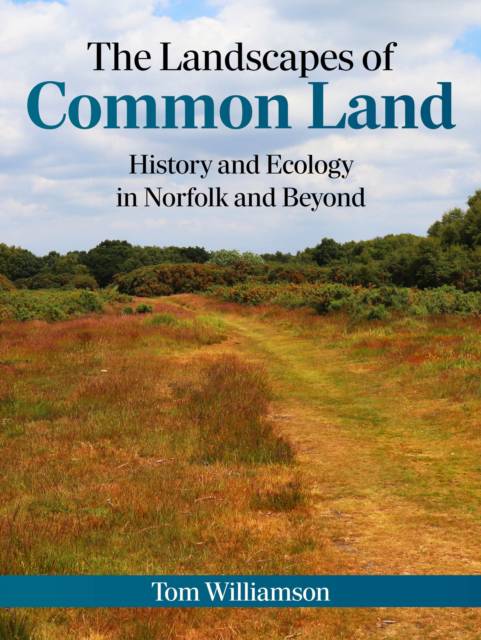
- Afhalen na 1 uur in een winkel met voorraad
- Gratis thuislevering in België vanaf € 30
- Ruim aanbod met 7 miljoen producten
- Afhalen na 1 uur in een winkel met voorraad
- Gratis thuislevering in België vanaf € 30
- Ruim aanbod met 7 miljoen producten
Zoeken
The Landscapes of Common Land
History and Ecology in Norfolk and Beyond
Tom Williamson
Paperback | Engels
€ 66,95
+ 133 punten
Omschrijving
Explores the history, ecology, and physical features of English commons, focusing on Norfolk's landscapes.
Commons are an important part of the English landscape. Survivors from a once more extensive network otherwise eroded by the inexorable progress of enclosure, they provide a taste of wildness, crucial habitats for wildlife and valued spaces for recreation. To many people they seem to offer a tangible link with happier, more egalitarian times, when communities controlled the land; or with periods yet more remote, representing fragments of the wilderness of remote prehistory. But commons are shrouded in misunderstanding and myth. They were shaped by local societies that were highly hierarchical in character, and always embedded in inequalities of property and power. Their ecology, moulded by centuries of intensive exploitation - followed in most cases by a long period of dereliction - has only a tangential connection with the truly 'natural' habitats of the deep past. And a surprising number of our legally recognised commons are not, in reality, common land at all.
This innovative study, which concentrates on the county of Norfolk but ranges widely, is firmly focused on the character of commons as physical environments and places, as landscapes. Using a wide range of documentary, archaeological and ecological evidence, it discusses the development and management of commons from earliest times; explains their morphology, location and distribution; and explores why some examples survived the process of enclosure - and the distinctive traces left by those that did not. Above all, it describes the characteristic physical features of different kinds of common and explains how their ecology has, in innumerable ways, been shaped by history.
Highly readable and copiously illustrated, this book will appeal to all with an interest in the English rural landscape, and will be essential reading for those with a particular enthusiasm for common land.
Commons are an important part of the English landscape. Survivors from a once more extensive network otherwise eroded by the inexorable progress of enclosure, they provide a taste of wildness, crucial habitats for wildlife and valued spaces for recreation. To many people they seem to offer a tangible link with happier, more egalitarian times, when communities controlled the land; or with periods yet more remote, representing fragments of the wilderness of remote prehistory. But commons are shrouded in misunderstanding and myth. They were shaped by local societies that were highly hierarchical in character, and always embedded in inequalities of property and power. Their ecology, moulded by centuries of intensive exploitation - followed in most cases by a long period of dereliction - has only a tangential connection with the truly 'natural' habitats of the deep past. And a surprising number of our legally recognised commons are not, in reality, common land at all.
This innovative study, which concentrates on the county of Norfolk but ranges widely, is firmly focused on the character of commons as physical environments and places, as landscapes. Using a wide range of documentary, archaeological and ecological evidence, it discusses the development and management of commons from earliest times; explains their morphology, location and distribution; and explores why some examples survived the process of enclosure - and the distinctive traces left by those that did not. Above all, it describes the characteristic physical features of different kinds of common and explains how their ecology has, in innumerable ways, been shaped by history.
Highly readable and copiously illustrated, this book will appeal to all with an interest in the English rural landscape, and will be essential reading for those with a particular enthusiasm for common land.
Specificaties
Betrokkenen
- Auteur(s):
- Uitgeverij:
Inhoud
- Aantal bladzijden:
- 240
- Taal:
- Engels
Eigenschappen
- Productcode (EAN):
- 9781914427336
- Verschijningsdatum:
- 31/10/2025
- Uitvoering:
- Paperback
- Formaat:
- Trade paperback (VS)
- Afmetingen:
- 183 mm x 244 mm
- Gewicht:
- 698 g

Alleen bij Standaard Boekhandel
+ 133 punten op je klantenkaart van Standaard Boekhandel
Beoordelingen
We publiceren alleen reviews die voldoen aan de voorwaarden voor reviews. Bekijk onze voorwaarden voor reviews.








